But, you’re not alone! Many tech startup founders face the same challenge. That’s why I created this blog post specifically to help you generate innovative tech startup ideas.
I’ll guide you through the steps to clarify your ideal customer profile, identify your unique value proposition, and choose the right tech business model for you. Plus, I’ll share relatable examples to inspire you and make the process less daunting.
Whether you’re just dreaming up a tech business idea or have already begun your journey, this blog will help you gain clarity, confidence, and momentum.
So let’s get started and create some awesome tech startup ideas together!
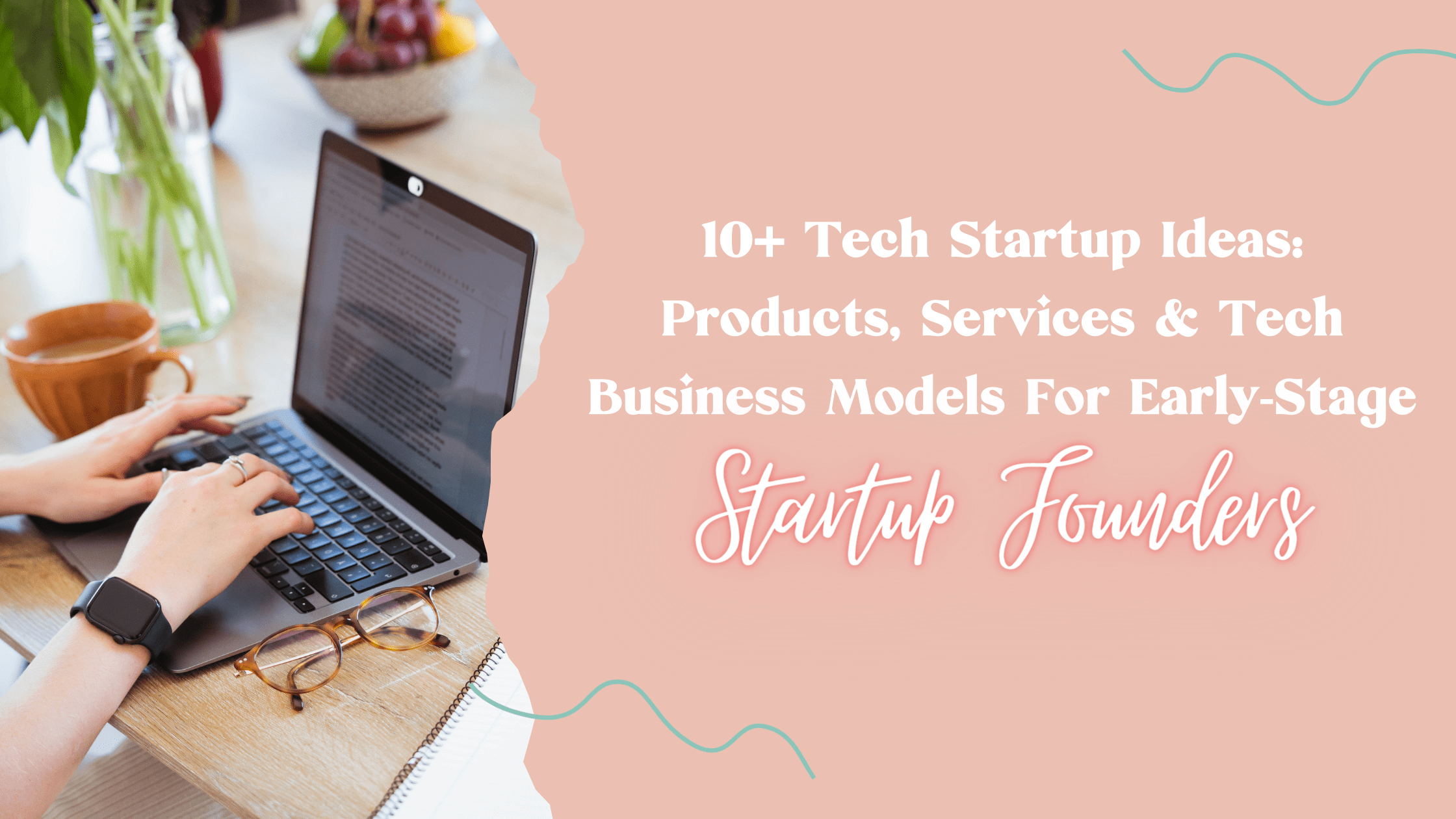
Challenges Facing Early-Stage Tech Startups
Building a tech startup is tough! A lot tougher than people think. So before we get into the actual tech startup ideas… I want you to be well equipped for some of the challenges you might face!
It’s rare that a business is so in tune with its niche that it can float along with little to no effort.
And unfortunately, many fail within their first year of business.
- Building the wrong product
- Being in the wrong market
- A lack of market research
- Bad partnerships
- Ineffective marketing
- The founder not having expertise in the industry where they want to offer solutions
Getting Stuck on GTM Theory
As a tech startup founder, you don’t want your business to end up as another statistic. But in an attempt to avoid failure due to customer acquisition and GTM (Go-to-Market) problems, it’s easy to get sucked into the needless world of “GTM theory land.”
Many founders burn themselves out trying to study overly complicated theories on GTM topics. This often happens to people who’ve been exposed to the “Overwhelm to Sell Method,” which is a tactic used by online GTM experts who create content that covers lots of theory on GTM topics.
Instead of simplifying the topic, they make things more complicated than they need to be so that people feel like the GTM concepts they’re teaching are super hard and complicated. Then they push people to buy their overpriced programs to get help in simplifying the topic and achieving results.
None of this is rocket science! It just takes some time to learn. But these people benefit by obfuscating the subject to create an appearance that the client needs to purchase the expensive program to achieve results that are actually pretty simple to attain. (We won’t name any names!)
Reading GTM theory books such as “Go To Market Strategy: Advanced Techniques and Tools for Selling More Products to More Customers More Profitably” or “Go to Market: The Marketing and Scaling Blueprint for Startups” can also be a waste of time.

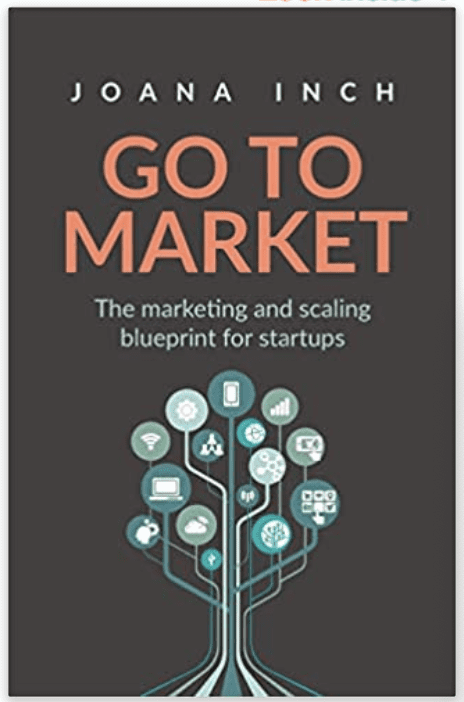
Books like this may teach you principles. But they’re not helpful when you get into the real world and start applying them to your own tech startup ideas.
Your first priority should be to generate revenue and build loyalty with your customers.
By avoiding the pitfalls of GTM theory overkill and expensive mentorship services, you can set yourself up for success and build a strong foundation for long-term startup growth.
We’ll get into the practical tips and examples on how to do that later.
A Fresh Take on Building A Tech Startup
Coming up with the next big product or idea – that’s A LOT of pressure for tech startups! However, one proven approach is to start by finding a market and monetizing it first. By doing this, you can ensure long-term profits and develop a successful business from day one.
Unfortunately, many GTM coaches out there want to take you through all the theories of how to DIY your tech startup growth and then get you to buy their overpriced mentorship services. In this blog, we’re taking a different approach!
I’ve helped over 100 tech founders start up fast, all while growing my own tech startup on the side.
In this single blog post, I’ll give you the training and tech startup ideas you need to decide on a tech business model and a good offer to start making sales.
And the best part? No purchase is required 😉 I’m sharing EVERYTHING you need to know for FREE!
Start With The Market
By focusing on building a market and monetizing it first, you can avoid getting bogged down with GTM theory overkill and expensive mentorship services.
It is better to concentrate on growing a loyal customer base, generating revenue, and establishing a solid foundation. That’s exactly what my client Kam Lee did…
You can listen to him tell his story in the video below, or keep reading if you prefer that method instead…
Follow me on:
Let me tell you a little bit about how starting with the market helped Kam’s business, Finetooth Analytics. He has really been on a roll since teaming up with Data Mania!
Despite barely having an online presence, he was able to generate $350K in recurring revenue in his first year!
And get this: his profit margin is a jaw-dropping 67.7%.
But it wasn’t always smooth sailing for Kam. When we first met him at the start of 2020, he was juggling a bunch of small, custom projects with low budgets under his old brand, K Lee Studios.
He quotes: “It was like being a hamster on a wheel… I was having to rely on outbound measures to bring in new business and it was difficult to prove the value of my services.”
Seeing disconnects, he felt less confident producing quality content.
Through his work in my course, Kam understood that he had to start by finding the right market and making a connection with people in that market.
Following my market research methods, he discovered a far more viable offer than attribution tracking; Namely, marketing mix modelling (MMM). After discovering this market need, he quickly and successfully transformed his MMM service concept to a service offer.
This just goes to show, with the right strategies, you can succeed even in a crowded market.
Five Strategies That Will Help You Identify a Market for You Tech Startup Ideas
One of the biggest challenges for founders is finding their ideal customer and market for their amazing tech startup ideas.
I mean, how can you build a loyal customer base and generate revenue if you don’t know who you’re targeting?
Fortunately, there are several strategies that can help you identify your ideal customer and market:
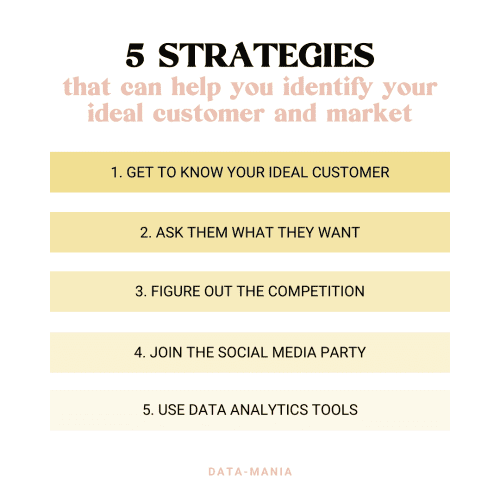
Strategy 1: Define your ideal customer
Before you start looking for your market, you’ve got to know who you’re targeting. Define your ideal customer avatar (ICA) – this includes stuff like their age, interests, habits, and what bugs them.
Strategy 2: Ask them what they’re looking for
Find people that look like your ICA. Conduct surveys and interviews to get the lowdown on their pain points, motivations, and behaviors. By understanding their needs, you can create a product or service that meets them.
Strategy 3: Suss out the competition
Look at what your competitors are doing and how they’re positioning themselves. Look at their strengths and weaknesses? Can you fill in any gaps?
Strategy 4: Join the social media party
Social media and online communities are great places to connect with potential customers and get feedback on your tech business ideas. Engage in relevant groups, participate in conversations, and share your ideas with your target audience to get feedback.
Strategy 5: Use market research tools
Take advantage of tools like Google Analytics, SEMRush, and Ahrefs to help you gather insights into your customers’ behavior and preferences.
Trust me, the time you put into identifying and understanding your target market with pay off tenfold! Not only will you understand who your target audience is, you’ll know what they actually want. Meaning, you can create a product or service that really speaks to them.
The more you learn the more you can adapt your approach. Listen to feedback and stay ahead of the game by making improvements regularly!
So, now you know how to find your market, let’s take a look at some…
Effective Tech Startup Ideas
You know that feeling when you’re at a crossroads, trying to decide which path to take for your business? It’s tough to know which direction to take! Especially in an industry that’s always changing and evolving.
But fear not, because in this section, I’m going to break down some of the most popular and successful tech business ideas out there.
If you want, you can watch this section instead of read it in the YouTube video below:
So, grab a cup of coffee, get comfortable, and let’s dive into some of the most exciting tech startup ideas out there…
Service Business / Agency Tech Startup Ideas
What it is: Freelancing / freelancing with a team
If you’re a freelancer, you probably already have a service-based business. And chances are, you do all of the work solo. Am I right?
Another way to do service-based business would be something like freelancing with a team. Bringing in a partner who can offer the same level of data services you do might be a good idea. Or perhaps hire a team to help you with all of the admin, marketing, sales, etc. – all that stuff can be supported by team members.
You don’t have to do it alone if you don’t want to! There are a few different ways to bring in help with a service-based business.
Service-Based Tech Business Models PROs and CONs:
PROs:
- It’s the quickest way to get your business off the ground
- You can sell your time for 2x what you would make as an employee (and that’s as a minimum)
- Selling your time is the most valuable thing you own, which is one reason it’s easier to use as an offer when you’re trying to make high-ticket sales
CONs:
- As far as liability goes, you’ve got to think about who will bear responsibility in the event something goes wrong (in most cases, it’s probably going to be you)
- It’s not scalable long-term. Services are great for starting a business and getting profitable, but you’ve got to start thinking about how to shift this
Quick tip: For scalability, you can transform your service-based business into agencies or SaaS (software-as-a-service).
Service-Based Freelancing Tech Startup Ideas and Example
Freelancing your services is a great way to get your tech startup ideas off the ground FAST!
The bottom line is that no matter what your skill set, there’s an opportunity for you in service-based tech startups. Examples of freelance services you could offer include:
Data analytics consulting: Help businesses analyze their data and make informed decisions using statistical analysis, data visualization, and other data analytics techniques.
Mobile app development services: Design and develop custom mobile apps for businesses or individuals, including iOS and Android apps.
IT consulting services: Offer IT consulting services to businesses, including network setup, security, cloud computing, and software development.
Data analysis and reporting services: Provide data analysis and reporting services to help businesses make better decisions.
Cybersecurity consulting services: Help businesses protect their data and systems from cyber threats by delivering cybersecurity consulting services.
Cloud computing services: Offer cloud computing services to businesses to help them reduce costs and improve flexibility and scalability.
UX/UI Design Services: Offer design services to help businesses create visually appealing and easy-to-use digital products.
Freelancing vs Consulting: Figuring Out The Right Option for You
There are two ways you can provide services as a tech professional: freelancing or consulting.
We cover consulting extensively in the next section, but what you need to know now is that…
Freelancing typically involves delivering implementation level work, while consulting usually involves delivering strategy and advisory services.
Think about what works best for you and your tech startup.
If you’ve got more experience with delivering implementation type work (aka; coding, software development, model-building, etc.), then freelancing is probably the better option for you. Consultancy may be your thing if you’re experienced with and enjoy delivering strategic planning and advisory type support.
If consulting sounds like you’re thing, I’ve got something that might interest you… the Data Strategy Action Plan! With it, you’ll be able to create a killer data strategy that’s just as good as what big consulting firms charge a whopping $250,000 for.
An Example of What You Can Do with A Service-Based Tech Startup
I mentioned the success of Kam Lee earlier, and he’s As a great example of how successful a service-based business can be!
Staying afloat during the pandemic required businesses to adapt and pivot. Kamarin Lee, the Chief Marketing Data Scientist at Finetooth Analytics, did just that and had an explosive year.
Within his first year in business, Kam landed $350k of annual recurring revenue (ARR) for his company, with a 67.7% profit.
This was a huge jump from his previous business, K Lee Studios, which was focused on small, customized projects with low budgets.
Wanna hear more about Kam’s success story? Listen below.
Agency Model Tech Startup Ideas & Examples
Agency models are also service-based businesses. The difference between agencies and freelancing or consulting is… With agencies, you’re not doing all of the heavy-lifting with respect to client delivery. You have a team to help you.
It’s often the natural progression for freelancers looking to scale their business.
Types of tech agencies include:
App development agency
Software development agency
Digital marketing agency
Analytics and reporting agency
Marketing automation agency
Pay-per-click advertising agency
Data mining agency
An Example Of What You Can Do with a Tech Services Agency
It’s exciting to launch a tech startup. But it’s also challenging. Especially for the founders, who shoulder the responsibility of ensuring the business’s success.
Lori, the co-founder and CEO of Future Sight AR, was another student of mine. She owns an AR/VR services agency.
Through her work in an earlier version of our Data Creatives & Co. course, Lori was able to land a $100k contract for her agency (all off of a LinkedIn post that she didn’t even write – she just used the automation method I taught her to source and publish the post!)
Lori’s experience serves as an excellent example of how scaling your business into an agency model can skyrocket your results when going solo is no longer feasible.
Listen to her full story below.
Looking for more cool tech startup ideas? I’ve put together over 50 income-generating ideas!
Within an hour of reading it, you’ll have dozens of ideas for new ways to make money with your data expertise.
In fact, some of our students have made over $1,000 an hour using them. You could be next!
Coaching / Advising Tech Startup Ideas
What it is: Group coaching / mentoring, 1-on-1 advising
Coaching and advising are great ways to connect with your customers on a more personal level. Group coaching provides a sense of community and support, while 1-on-1 advising offers a more intimate and individualized experience.
If you’re looking for a quick and easy setup, coaching and advising can bring in decent hourly rates, especially if you offer group access at a lower price point. However, if you’re aiming for higher-end clients, it’s essential to charge a premium rate for your 1-on-1 advising services.
PROs and CONs of coaching / advising tech business models:
PROs:
- Coaching and advising offers are quick and easy to set up.
- Coaching and advising offers rates are decent (per hourly investment of your time).
CONs:
- Coaching and advising offers can amount to lower ticket sales, compared to what you can make if you sell something like an enterprise grade SaaS.
- Delivering upon coaching and advisory services takes time away from your business.
What to Charge for Your Time
As a tech consultant or advisor, figuring out what to charge for your time can be tricky.
Your rates should be competitive and reflective of the value you provide. But you also want to avoid pricing yourself out of the market or undervaluing yourself.
As I price my coaching services, I start by thinking about the type of service I’m offering…
For example, 1-on-1 advising is a premium service that typically commands a higher price point than group coaching or mentoring. Seasoned advisors charge as much as $1200 per hour for 1-on-1 consultations – often much more.
Don’t forget that not everyone can afford (or needs) this level of service. It is likely that only a small percentage of your audience will actually convert with this model. If you really want to build trust and establish relationships, create a lower-priced offer to get people into your sales funnel.
When it comes to group coaching or mentoring programs, pricing can vary massively. You need to account for both the duration of the program and the scope.
A 4-month program priced at $3-4K may be considered low-priced compared to enterprise-grade packages or access to SaaS for larger corporations.
The right price point for your services depends on your target market, the value you provide, and the competition.
Example Coaching / Advising Packages:
If you’re offering coaching services, there are many creative ways you can structure your packages to provide maximum value to your clients.
One approach is to tier your packages based on the level of service you provide. Clients can then choose the package that best fits their needs and budget.
For instance, your lowest tier package may simply include a 60-minute coaching call. This can be ideal for those who have specific questions or challenges they need help with.
However, for clients who require more comprehensive support, you can offer higher-tier packages that come with added perks and benefits.
One of the perks you can offer is access to additional resources, such as worksheets, templates, or toolkits that complement your coaching sessions. This gives your clients tangible resources they can refer to long after your coaching sessions have ended.
Short-term advising examples:
Here is an example of what people are charging and delivering within executive coaching and productivity advising packages.
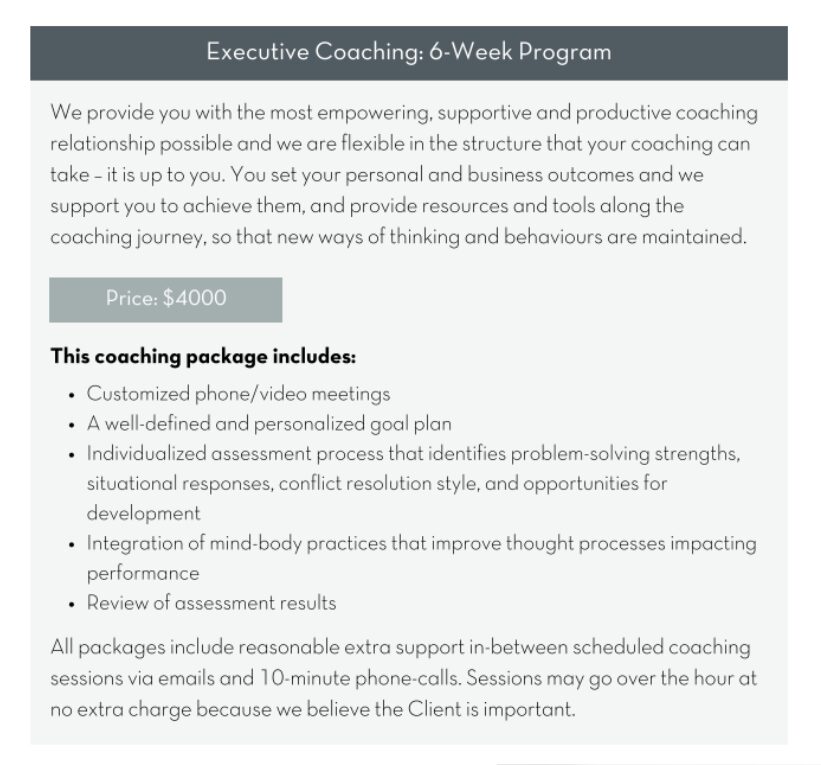
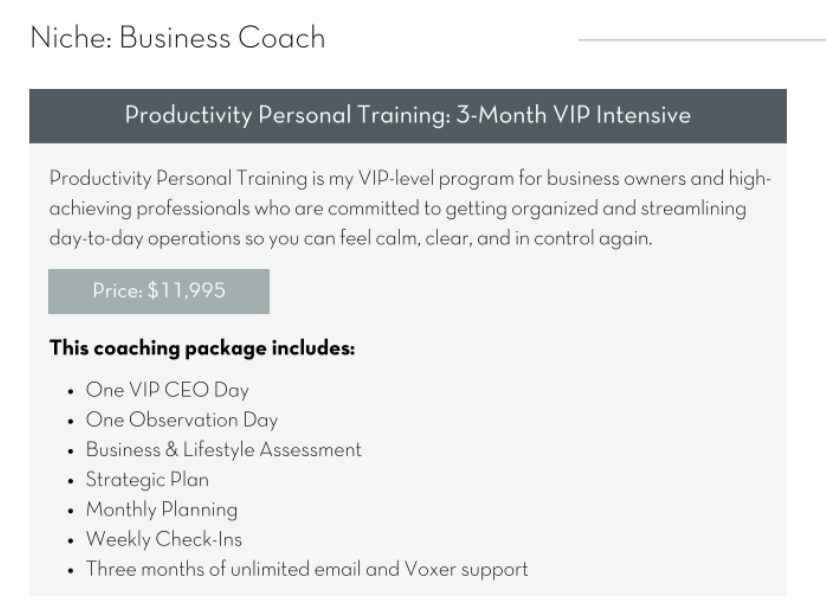
Image source: https://paperbell.com/pb/real-coaching-rates/
Another example of a short-term advising package is what I offered in my Data Strategy VIP Day program when I used to offer that.

As part of my VIP day offer, I also gave customer free access to my data strategy product suite, which includes:
Longer-term coaching examples
For clients who want to make significant changes in their lives and need accountability and ongoing support, long-term coaching works well. Essentially, it allows for a more intense coaching experience, which can lead to better results and stronger relationships between coach and client. The key to designing long-term coaching programs is keeping the client motivated and engaged. This may include regular check-ins, progress tracking, and goal setting sessions. You can also offer additional resources or support, such as access to a private community or exclusive content. Feel free to check out my own 3-month private business coaching to see what I offered as part of that program. Overall, long-term coaching programs are a great way to provide ongoing support and guidance to your clients, while also building a deeper connection and relationship with them.SaaS Tech Startup Ideas
What it is: Software as a service (SaaS) that you deliver in a cloud environment
A SaaS tech business model involves providing customers with access to software and services through a web-based application.
Essentially, instead of selling a product that customers purchase and keep, a SaaS business charges a recurring subscription fee to use their software or service.
Because of its ability to generate steady, predictable revenue streams and its scalability, this model is becoming increasingly popular in the tech industry.
Some well-known examples of successful SaaS businesses include; Salesforce, Zoom, and Dropbox.
PROs and CONs of SaaS business models:
PROs:
- You can scale your SaaS product quickly and easily.
- There’s a lot of potential to make high profits with SaaS-based businesses.
CONs:
- It takes a long time to develop and launch a SaaS product.
- You need to have technical skills to build and maintain the product.
- It can be expensive and requires significant capital investment to build a SaaS product.
SaaS business models have some great upsides with the scalability of products and massive revenue-generating potential.
But, let’s not forget the downsides; The biggest one being the time it takes to market. SaaS solutions require a lot of technical know-how, time and money! You may even need to hire additional developers to help with development and maintenance, adding to your overall capital cost.
You’ll need skill and patience to really make it succeed.
Advice From a SaaS Growth Consultant…
I’ve worked with a lot of SaaS startup ups. I’ve also taken on SaaS consulting contracts. So, it’s safe to say… I know a thing or two about the industry!
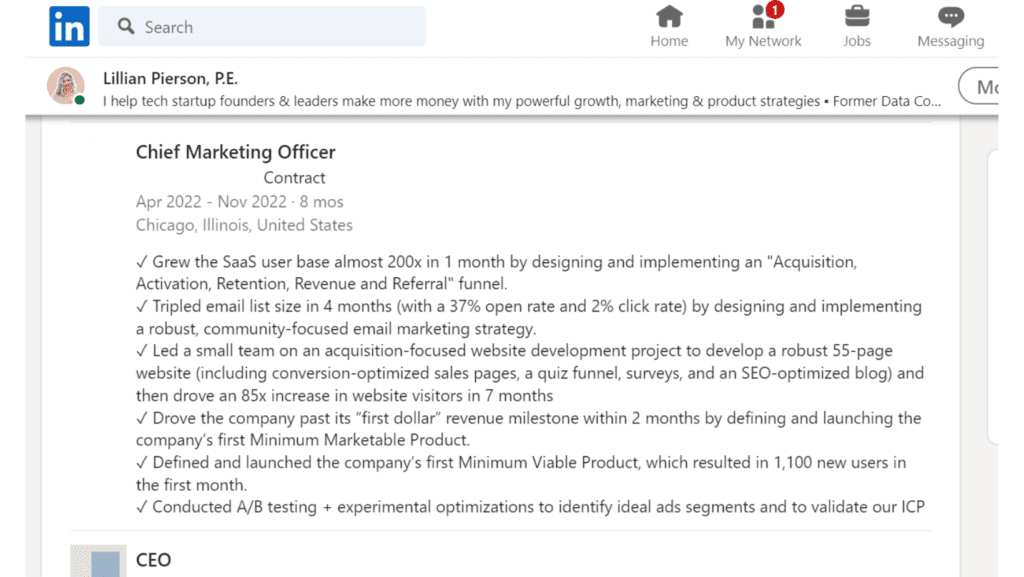
So here’s my advice to ALL aspiring SaaS startups…
Start with the market! Don’t jump into building a product without validating its need.
Do your research. Is there a market for what you’re building? Trust me, I see this mistake ALL THE TIME!
Who’s your target audience? What are their pain points? How will a SaaS solution benefit them?
These are all questions you need to know the answer to before spending time and money building a product.
A successful SaaS product isn’t just about technology! It’s about solving a problem for your customers. Do your research and make sure that you’re building something that people need and want.
Information Product Tech Startup Ideas
What it is: Books, online courses, digital products, etc.
An information products business means you’re selling digital products like ebooks, courses, or webinars filled with valuable information that customers need to get a particular outcome.
It’s a good fit for new tech founders because it’s low-cost and scalable. You create something once, and sell to many customers without the need for physical products.
You could create info products like coding courses, ebooks, templates, or webinars, drawing from your tech expertise to provide valuable content that helps others grow their skills.
But don’t be fooled, creating and selling info products takes a lot of work.
It involves researching, developing high-quality content, building an audience, and promoting products effectively – not to mention maintaining the products and keeping customers happy.
But with the right approach and hard work, info product tech business models can be a profitable and rewarding venture.
PROs and CONs of Information Product Tech Business Models:
PROs:
- Info products can be easy to sell.
- Info products are very scalable (like, really, really scalable).
CONs:
- You need to have an audience to sell to in order for the info products model to work for you.
- Info product sales are generally lower-ticket.
Wait a minute! I get it, selling information products sounds cool and all, but if you haven’t built your personal brand or gained a following, it’s going to be a challenge to make a profit right away.
In my experience, it’s better to start with services and put a lot of effort into marketing to build the audience you need to eventually sell those awesome information products.
Wondering how the heck to even a sell a digital product? I’ve gotcha covered!
4 Sure-fire Ways To Be Successful Selling Digital Products
(From someone who’s actually been there and done it!)
Step 1: Focus on the audience and transformation
If you’re planning to create an information product, it’s important to start by focusing on your audience and the transformation you want to provide them.
In many cases, people create products based on what they know. Don’t fall into that trap! Identifying your audience isn’t enough. A product’s value comes from how it can help them reach their goals.
Let’s say you want to sell a high-ticket online course. It is not enough to teach a specific skill. You need to focus on providing a full transformation for your customers. (e.g. rather than simply teaching someone how to code, focus on how this skill will change their life).
Make sure to bake this transformation into your product and marketing message. If you don’t, people might as well go to Udemy and purchase a $10 course instead.
Put your focus on providing a value proposition that helps your audience achieve their goals.
If you’re looking for more advice on starting a successful freelance data business, download the Ultimate Toolkit for Data Entrepreneurs. You’ll learn the exact processes used by successful entrepreneurs to scale their businesses to the multi-6-figure range.
Step 2: Warm up your audience
The second crucial step in successfully selling your information products is to warm up your audience by creating valuable content around the topic of your product and establishing yourself as a thought leader in that space before launching.
It’s not enough to just create a product and wait for people to buy it. You need to build trust with your audience and showcase your expertise in the data niche. This means creating content that is relevant to your course topic and sharing it consistently with your audience.
By providing value through your content, you can nurture your audience and establish yourself as a go-to expert in the data space.
When you finally launch your product, your audience will already be warmed up and more likely to invest.
Step 3: Have a pre-sale period
To successfully sell your data product online, you need to have a pre-sale period.
Using the online course example… rather than building out the entire program, create about a third of it and do some pre-sales to figure out how well the course is selling and who’s resonating with the content.
This also gives you the chance to tweak your marketing and messaging so it attracts the right audience.
A pre-sale period means you won’t invest too much time, money, and energy before validating your course idea. If your pre-sale doesn’t get traction, you can cancel it and refund people who bought it, then go back to the drawing board to figure out what went wrong.
On the other hand, you may pre-sell the program and get overwhelmed with clients. But this is a good problem to have because it means there’s interest and demand for your course.
You can bring on a team to balance your workload and use the added income from your course to do so. So, make sure to have a pre-sale period to test the waters and ensure the success of your data course.
Step 4: Decide how you will publish your information product
Books and courses can be published and sold in many different ways. Self-publishing and partnering with a brand are two common approaches that have their own unique advantages and drawbacks.
Here are the pros and cons to both options:
Self-Publishing Pros & Cons
- You get to retain rights to your content.
- There is a potential for higher profit margins.
- You have more control over marketing and pricing.
- You’ll need to do all marketing yourself.
- Self-publishing requires an investment in software for hosting.
- It may take you longer to establish the credibility of the product.
Publishing with a Partner Pros & Cons
- You’ll have the potential to reach a larger audience.
- You’ll get the opportunity for credibility-building through association with a brand.
- This approach requires less marketing effort.
- You have less control over content and pricing.
- You’ll have lower profit margins.
- It may take a long time to establish a partnership with a reputable brand.
Examples of Real-Life Technical Information Product Success
An online course success case:
Let me tell you about one of my previous students, Jordan. He’s a total rockstar in the data industry! After using my Data Creatives & Co. Course to develop his go-to-market capabilities, he created his own amazing online course called “Excel: Dashboards for Beginners“.
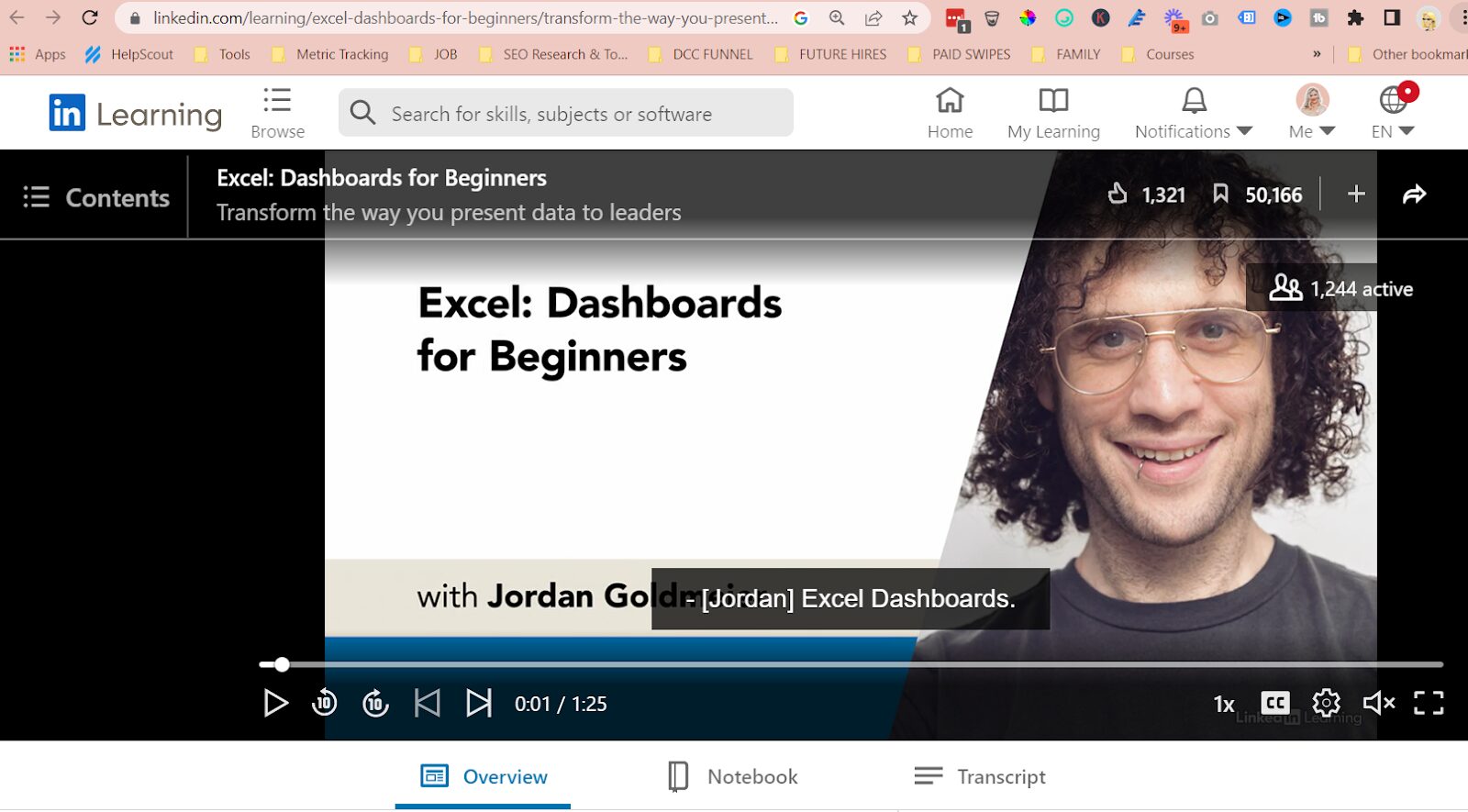
It’s a great course for anyone wanting to learn how to create visually appealing and informative dashboards in Excel. It’s been a huge success. I’m so proud of him for putting in the hard work to create such a valuable resource for others in the industry.
As for earning potential… last I heard, Jordan was earning at least $1500 per month for just this one 45-minute course!

As for me, I’ve done 16 courses and trained almost 2 million knowledge workers on data science. While the earnings don’t scale linearly, you can get an idea of how much my courses have been making me over the years.
A template success case:
Back to Lori-Lee for a moment… She’s an excellent example of someone who has successfully created and sold a digital template product.
She recognized a need in the market for a well-designed startup pitch deck and created a template that solves this problem for entrepreneurs.
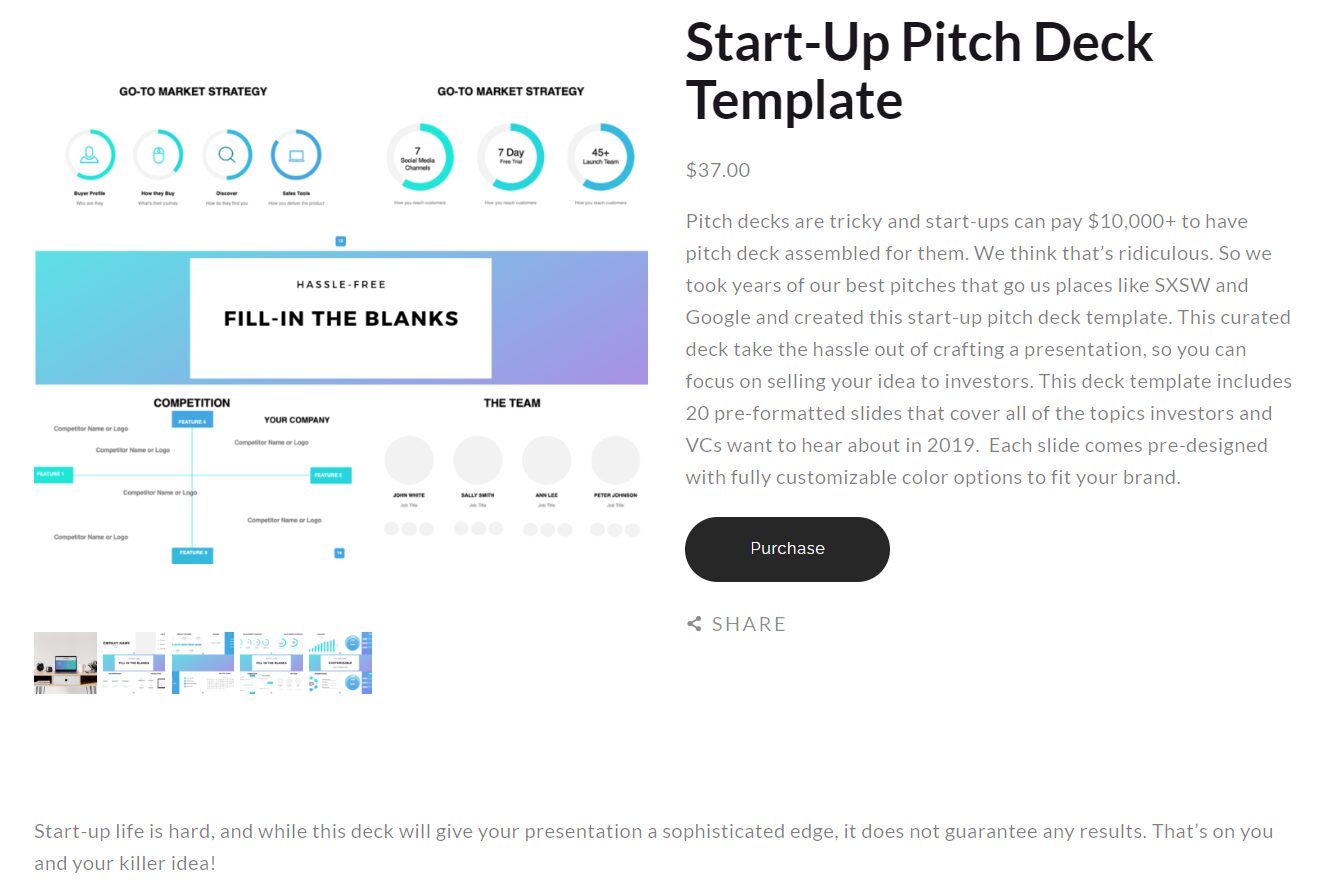
It’s been well-received and continues to bring in steady revenue. Lori-Lee’s success demonstrates the power of identifying a niche and creating a product that meets the needs of your target audience.

As I said at the start of this post… coming up with tech startup ideas is just the beginning. Turning that idea into a successful business is a whole different story.
It takes hard work, dedication, and strategic planning. But you can make it happen with the right mindset and approach.
Remember to focus on solving real-world problems, validate your idea with potential customers, and continuously iterate and improve your product or service.
If you’re take your tech startup ideas to the next level, be sure to check out my FREE MASTERCLASS 4 Steps to Monetizing Data & Tech Expertise.
Inside I’m sharing my top strategies and insights on how to turn your skills and knowledge into a profitable business.
I’ve recently joined the build in public community over on Twitter. I’m building a membership for the startup community.
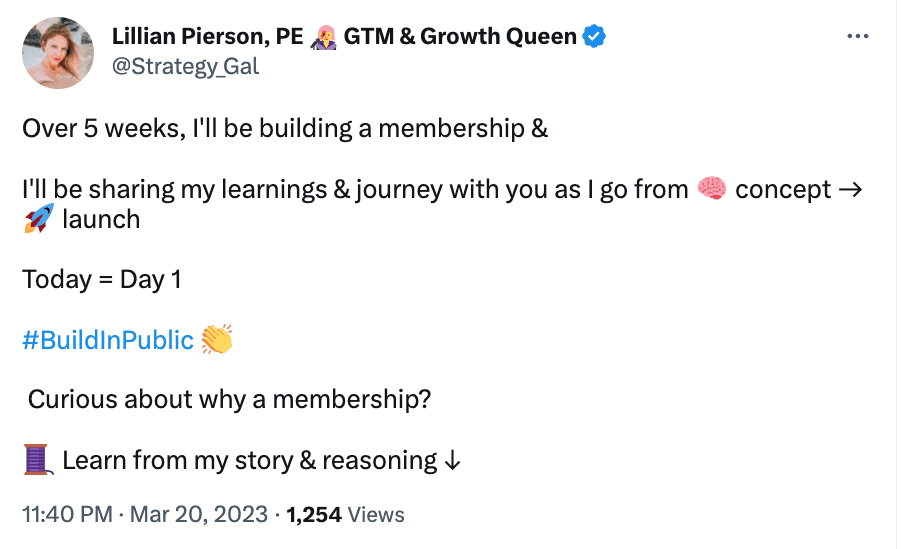
Every day I’m sharing updates on progress made and key takeaways. I’ll also be doing a weekly #BuildInPublic newsletter. If you’d like to see how I go about building a membership, I’d love to have you inside of our newsletter community. You can join the conversation here.




